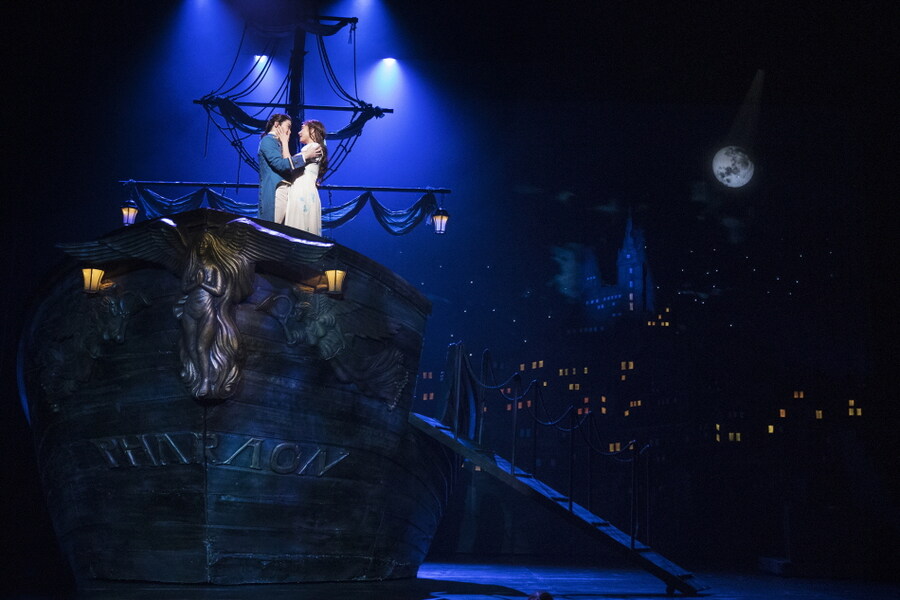While others were baking bread and doing puzzles, I got addicted to Korean television during the pandemic. My pandemic hobby became Korean language lessons. After three years of study, my Korean is not quite good enough to understand Korean musicals completely, but that was not going to stop me from seeing several shows on my recent trip to Seoul.
At a little over 20 years old, the contemporary Korean theatre industry is still quite young compared to major commercial markets like Broadway and the West End. For years, translated Western musicals were the staple there. Composer Frank Wildhorn’s work is particularly popular. But there is a growing effort to develop homegrown musical material (with some eye towards export).
Unlike open-ended productions elsewhere, Korean musicals usually run for a set couple of months. They have rotating casts for the lead roles, so when booking you want to be sure you have selected a performance where the actor you want to see will be on. You are likely to see famous Korean TV actors or K-pop idols in the cast of musicals alongside artists best known for their musical theatre work. Across the board, the musical performers I saw were top-notch and the productions were well-funded and sleek.
As an English-speaking audience member with limited Korean fluency, I could only absorb certain elements of these shows. But I think there is a valuable experience in letting go of language sometimes and connecting to the theatre through production, performance, and theatricality. While certain specificity and nuances are lost, there is a kind of foundational experience to be had (especially after so much disconnection throughout the pandemic) in taking a purely emotional and visual ride through theatre.
For one, design choices can stand out more. A woefully underlit scene in The Count of Monte Cristo musical had me straining in my new eyeglass prescription. When watching a Korean translation of Samual Adamson’s play Wife, I noticed a lack of situational sound design (and maybe longed for anything but the silence in this stilted production).
But seeing a replica production of Les Misérables in Korean made me really appreciate the narrative lighting design (the program credits lighting designer Paule Constable, as well as the collaborative designer for the Korean production, Simon Sheriff). On a redesign of the set by Matt Kinley, projections styled to look like paintings by Victor Hugo created a moody, abstracted space to think about the historic backdrop of the story.
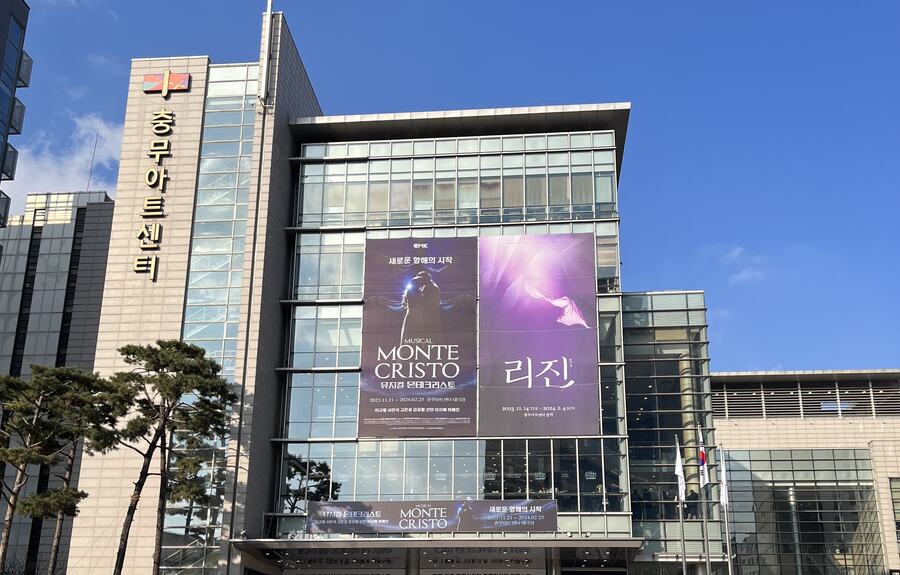
For other shows, I enjoyed getting swept up in the performances, even when the underlying material itself might not have been my cup of cha. The plot of the musical The Count of Monte Cristo is not particularly subtle, but that was only helpful given my limited language skills. After watching a lot of Korean TV shows, I can see why this show has proven popular in Korea (it has had productions in 2010, 2011, 2013, 2016, 2020). Popular themes in Korean TV include corruption, injustice, and revenge. It is no exaggeration that I have learned the Korean word for revenge (bogsu, 복수) from watching TV. With music by Frank Wildhorn and book and lyrics by Jack Murphy (Korean lyrics by Park In-seon and Kwon Eun-ah), and directed by Kwon Eun-ah, the vengeance-focused musical, adapted from the Alexandre Dumas novel, slots in well to this cultural vernacular.
With the looks of a Disney prince and a soaring tenor, Kim Sung-cheol was worth seeing as Edmond Dantès, the vengeful hero, who returns from an unjust prison stint to find that his best friend has married his one-time fiancée. Sung-Cheol has a gorgeous upper register, shifting from jubilant lover to brooding, wronged man with ease. In a comedic fight scene, he also showed he can exude a witty charm. He has played some sweet second leads on TV, but it was nice to see him getting a meaty part on stage.
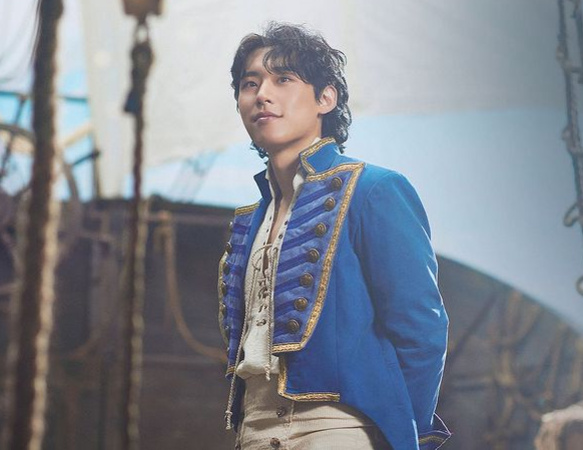
This lush new production uses a rising corkscrew turntable and leans heavily on detailed projections that can make it look like there is a lapping tide onstage, or that Dantès is swimming up from the bottom of the ocean, or a cave has collapsed. A Venetian carnival with overdone decoration in set and costuming looks a bit cheesier. But Monte Cristo is a solid show to get your feet wet with, since the plot is easy to follow and it is full of big emotional songs for the leads to belt.
Another perennial favorite in Korea is Dracula, also with music by Wildhorn, and lyrics and book by Don Black and Christopher Hampton (Korean adaptation by Kim Su-bin, Lee Ho-jeong, Korean lyrics by Jeong Han-sol and Won Mi-sol). It has been produced five times in ten years in Korea.
Among the rotating cast, I came to see Shin Sung-rok in the role of Dracula. A TV star who is frequently in musicals (he’s also played Dantès in Monte Cristo, as well as Maxim de Winter in Rebecca and the title role of Sweeney Todd), he has a striking presence (this clip is from a prior production he was in, not the one I saw), and it is not hard to imagine him as the magnetic but undead vampire.
But even having tried to watch a bad bootleg of the Broadway production to prepare myself to follow the show, I found it utterly convoluted. In this case, not understanding everything actually might have been a blessing. As best I can tell, Dracula is looking to move to London, where he is inexplicably drawn to his British real estate lawyer’s fiancée, Mina (Jeong Seon-ah). When Mina’s best friend Lucy (Choi Seo-yeon) marries one of Mina’s many suitors but is bit by Dracula, her suitors—along with vampire hunter van Helsing (Park Eun-seok)—set out after the vampire. But Lucy rips down all the protective garlic and crucifixes they have surrounded her with so she can fully succumb to Dracula, in a very bodice-ripping kind of way. All the while Dracula and Mina are somehow still in love, even though he turned her bff into a vampire, and there is a lot of “resisting” until there isn’t.
It’s all very horny and ridiculous. Why exactly does Mina need to suck Dracula’s blood from his chest? And why does this not also make her a vampire? (Instead she just looks a little nauseous.) I was really confused about the dramaturgy of vampires. Does Dracula become a vampire because he stabs a crucifix in rage? Truly some things were lost to me, and I don’t think the language barrier can take all the blame. David Swan’s staging doesn’t do the material huge favors: At one point Dracula’s coffin descends from the rafters and then just…rises again. Do vampires have an elevator to heaven?
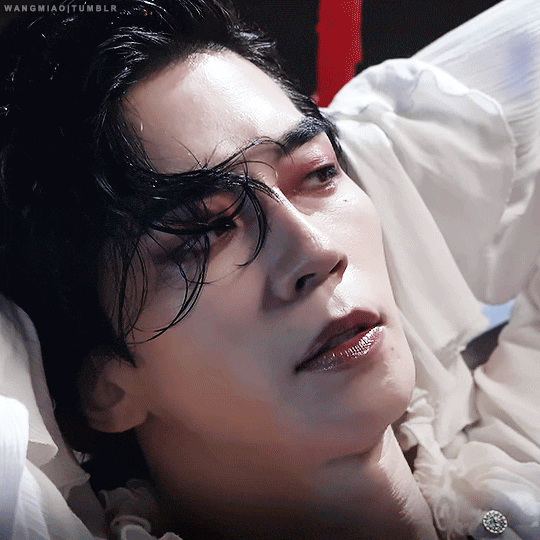
The show’s costuming also gave me pause. Maybe because the Christmas season was on my mind, but when Dracula entered one scene as an old man with long white hair and a red velvet robe, carrying a sack of babies to feed his minions, he looked to me like the most perverse Santa ever.
As bizarro as all of this is, Shin Sung-rok is so committed and riveting you might be forgiven for getting swept up in it. He throws himself wholeheartedly into this character. I had a lot of fun watching him fly from vampiric rage to lovesick woe, and would do it again.
I wanted to try to be more adventurous and see more Korean-developed musicals. The previous year in Seoul, I saw a musicalized version of the smash Korean TV series Crash Landing on You, which I loved. Without mimicking the TV show, the stage cast managed to maintain much of the charm of the original work. But I had the benefit of knowing the story.
This time, I saw a new Korean musical not based on pre-existing material, Il Tenore. Gordon Cox’s recent Jaques Substack report on Korean theatre notes that one of the show’s stars, Hong Kwang-ho, is Korea’s biggest musical star. Proving this point, his performances Il Tenore sold out instantly when tickets went on sale. The new musical, with book and lyrics by Park Chun-Hue and music by Will Aronson (the duo behind Maybe Happy Ending), is fictional but inspired in part by the true story of Korea’s first opera tenor.
The story is set in the 1930s in Korea, against the backdrop of independence activists fighting against the Japanese occupation. Seo Jin-yeon (Kim Ji-hyun) and Lee Su-han (Shin Sung-min) are trying to covertly convey their anti-Japanese sentiments across via an Italian opera about Venetians resisting aggression. Yun I-seon (Hong Kwang-ho) is a nebbish medical student dutifully following his parents’ dream for him to become a doctor, but he finds he has a secret talent and passion for opera. He joins Jin-yeon and Su-han in their opera effort, and it changes all their lives forever.
The subject matter readily lends itself to musicalization. As the activists struggle to put on a show while trying to avoid getting shut down by the censors, the show depicts a battle to find an independent voice while living under a repressive regime. Throw in a love triangle and you have big feelings to sing about.
Though I surprisingly picked out some details with my limited Korean, with a more talk-heavy story it was harder for me to follow the plot. I could still connect to the show’s emotional arc. The music is full of longing, as these characters bubble over in their efforts to see their dreams fulfilled against the odds.
Some elements work better than others. A large part of the musical feels like it is just a showcase for Hong Kwang-ho to melt your face off with his voice and sing opera-inspired numbers, which he does with ease. But he’s also an adept actor: His slouchy, shy I-seon transforms completely when he sings, and we see I-seon blossom with self-discovery.
While it is meaningful to see a historically accurate depiction of men and women in the independence movement, the love triangle element of the musical is less effective. And there is a cloying framing device and a narrative “twist” that felt unearned. There is a powerful story within this musical that just needs to be excavated. It felt like I had peeked at a sculpture before it was done.
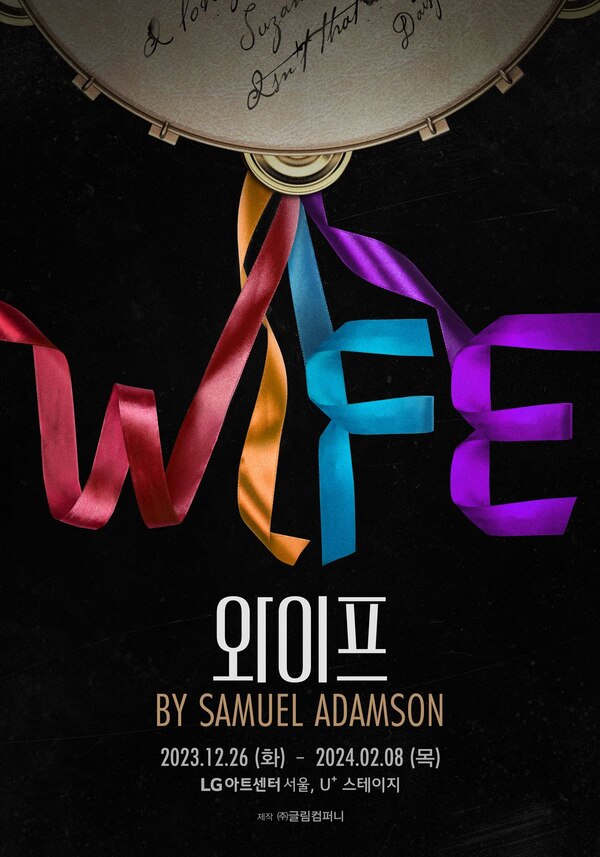
I saw one play while I was in Seoul and it did not go well. I was curious that they were reviving a production of Adamson’s Wife. A story of queerness and marriage told through multiple generations, it uses stagings of Ibsen’s A Doll’s House as recurring motif. It starred an idol and TV actor I like, Sooyoung, in her first stage role. With references to honeymooning in the Lakes District, Enoch Powell, Section 28 (the U.K. law that prohibited the promotion of homosexuality), and Kirsty MacColl, the text struck me as deeply British (Adamson is from Australia but has largely worked in the UK). The material was translated into Korean (in a quite literal manner) but it remained in a British setting, despite some confusing moments of cultural cross-expression—a Korean drama chest-beating gesture, or student costuming that looked more Korean than British.
The Seoul cast looked in no way at ease onstage, save one actor, Hong Sung-won. He played both a closeted gay man who fears being outed by his more militant lover, as well as a flamboyantly out actor who embraces public displays of affection. Sung-won’s authentic presentation of both of these characters stood out, in contrast to cast members who either looked as if they were neutrally presenting the material with no connection to the text or were playing uncomfortable gay caricatures. At times, I literally could not hear the actors at all. I cannot even remember a stage performance where this was an issue for me, except for the intentional whispercore of Richard Nelson’s plays.
So not all experiments yield the best results. Still, it was heartening to see theatres full of young, passionate theatregoers, to learn about musical theatre stars I had never encountered before, and to feel encouraged that if I keep at my language studies, someday—at my slow rate of learning, possibly 100 years from now—I might have even stronger opinions about these shows.
Nicole Serratore (she/her) is a New York City-based attorney and theatre critic. She writes for publications such as The Stage, Variety, Time Out New York, BAMbill and Exeunt NYC.

